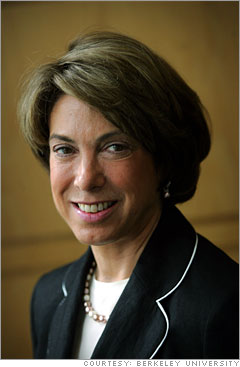Professor, Haas School of Business, University of California, Berkeley
In September 1998, Alan Greenspan, then Chairman of the Federal Reserve, gave a speech to the entering MBA class at the Haas School of Business at the University of California. In the weeks before the speech, the global financial crisis that began in Thailand's real estate market more than a year earlier had driven Russia to devalue its currency and default on its debt, triggering shock waves in financial markets around the world. By the date of his speech, Chairman Greenspan was convinced that global financial markets were on the precipice of a major liquidity crisis that threatened not just the emerging markets but the global economy itself.
During his remarks he warned that the U.S. could not remain an oasis of prosperity unaffected by a world experiencing greatly increased financial market stress. And he clearly signalled that the Federal Reserve stood ready to do whatever was necessary to provide adequate liquidity to safeguard the payment and credit systems on which economic activity depends.
In the weeks following his remarks, Long-Term Capital Management collapsed and the Federal Reserve organized a bailout by private financial institutions, not to reward LTCM for bad behavior but to contain the effects of its collapse on global financial markets. In addition, the Federal Reserve cut interest rates twice in rapid succession, and along with several central banks in Europe and Asia, provided substantial short-term liquidity to the global banking system.
To the outside observer, it looked like the Federal Reserve and its counterparts knew exactly what to do to avert a crisis. But the truth is they didn't. The best financial minds had not foreseen the Asian financial crisis and its tsunami effects around the world. Tthey had also made big highly leveraged bets on Russian government debt on the assumption that Russia would never default.
In our conversation before his speech, Chairman Greenspan said that central bankers were like drivers of a fancy new car whose mechanics they did not understand. When the car broke down and they looked under the hood, they didn't know how the new system worked. But they did know their responsibility was to get the car running again even if they had to do some unintended damage in the process. Many critics still argue that the Fed's dramatic monetary easing in 1998 inadvertently laid the foundation for the stock market bubble of 1999-2000. I disagree.
Today, the Federal Reserve and the other major central banks have been forced to look under the hood of the global financial system once again to try to understand how growing defaults on subprime real estate loans in the U.S. have triggered declines in the prices of high-quality assets and the drying up of credit even for sound borrowers around the globe. Unfortunately for the central bankers trying to contain the damage and keep the system running, its mechanics have become even more complex and difficult to understand than they were in 1998.
Financial market innovation in the form of credit derivatives has broadened the range of investors willing and able to hold risky new assets like securities backed by subprime mortgages, despite the fact the markets for such securities are both illiquid and non-transparent. Proprietary quantitative trading models, designed by the best possible minds using the best possible information technology, have yielded lemming-like behavior that has fed market gyrations. And the extent and location of market losses are hidden behind hedge fund walls.
Despite the new features of the global system, the basic responsibility of the central banks, as the lenders of last resort, remains unchanged: to provide the liquidity needed to protect the collective good of a smoothly functioning payment and credit system that retains the trust of market participants. But there is a lot of uncertainty about how this should be done. How much additional short-term liquidity will be required? At what rate should it be made available and against what collateral? Will it be necessary to cut interest rates to head off a recession caused by the disappearance of wealth? The central banks must remain ready to act even though they do not know the answers to these questions, even though there is no practical way for them to provide needed liquidity without letting at least some foolish investors and institutions off the hook, and even though stabilizing the market today creates moral hazard problems for tomorrow.
Once the turmoil has subsided, the Federal Reserve should look under the hood once again to try to figure out exactly what went wrong with the mechanics of the global financial system this time around. Based on what we know now, it is a good bet that hedge funds played a major role and that tougher reporting requirements and supervision of their activities are warranted to enhance the access to reliable information on which wise investment decisions depend.
| When Wall Street fails, it asks for a handout. Fortune's Allan Sloan says there must be a better way. (more) But the Treasury Secretary tells Fortune Magazine's Nina Easton that the economy is strong enough to withstand the volatility. (more) |

